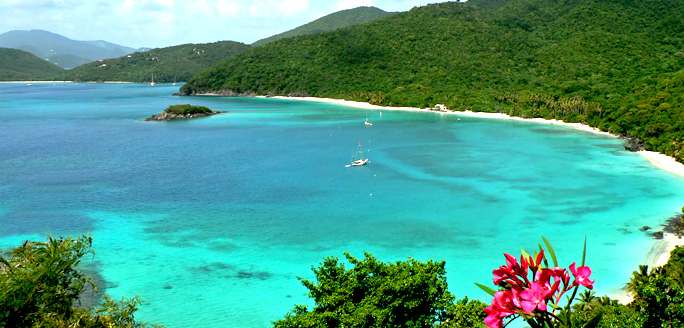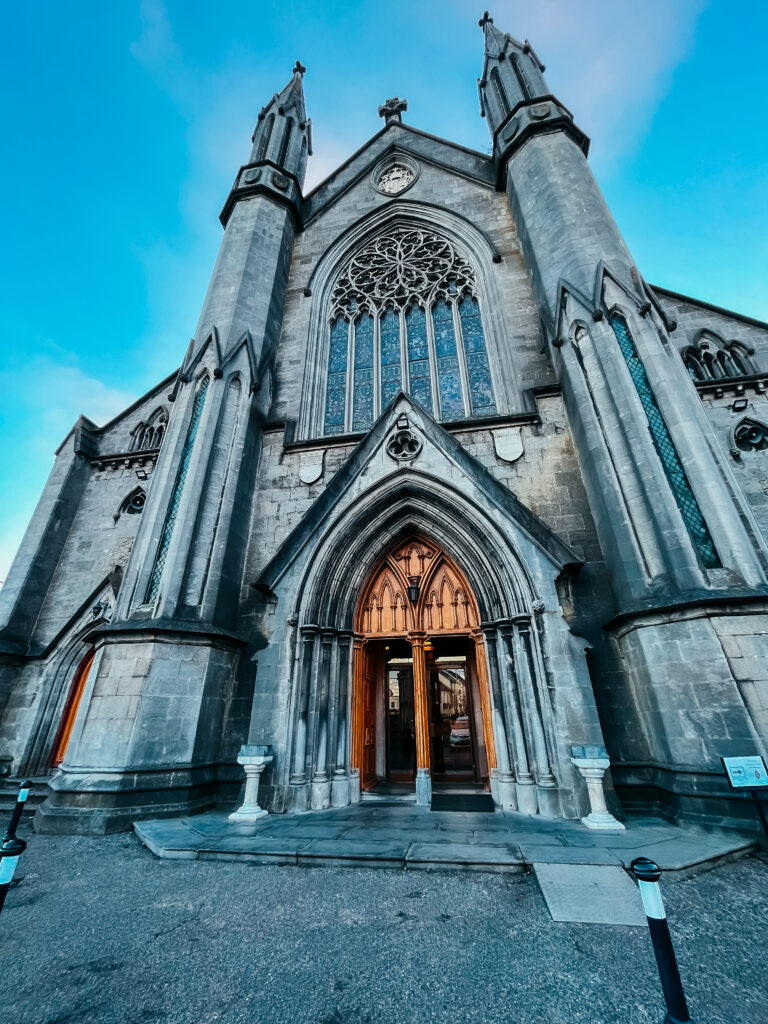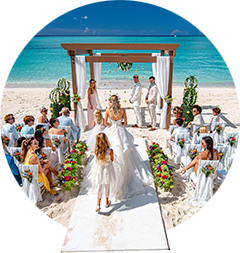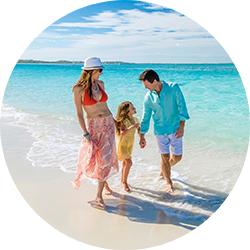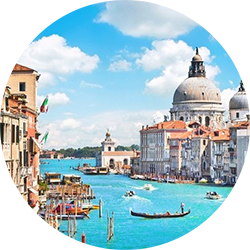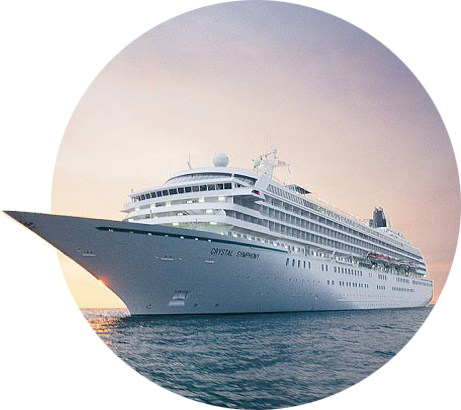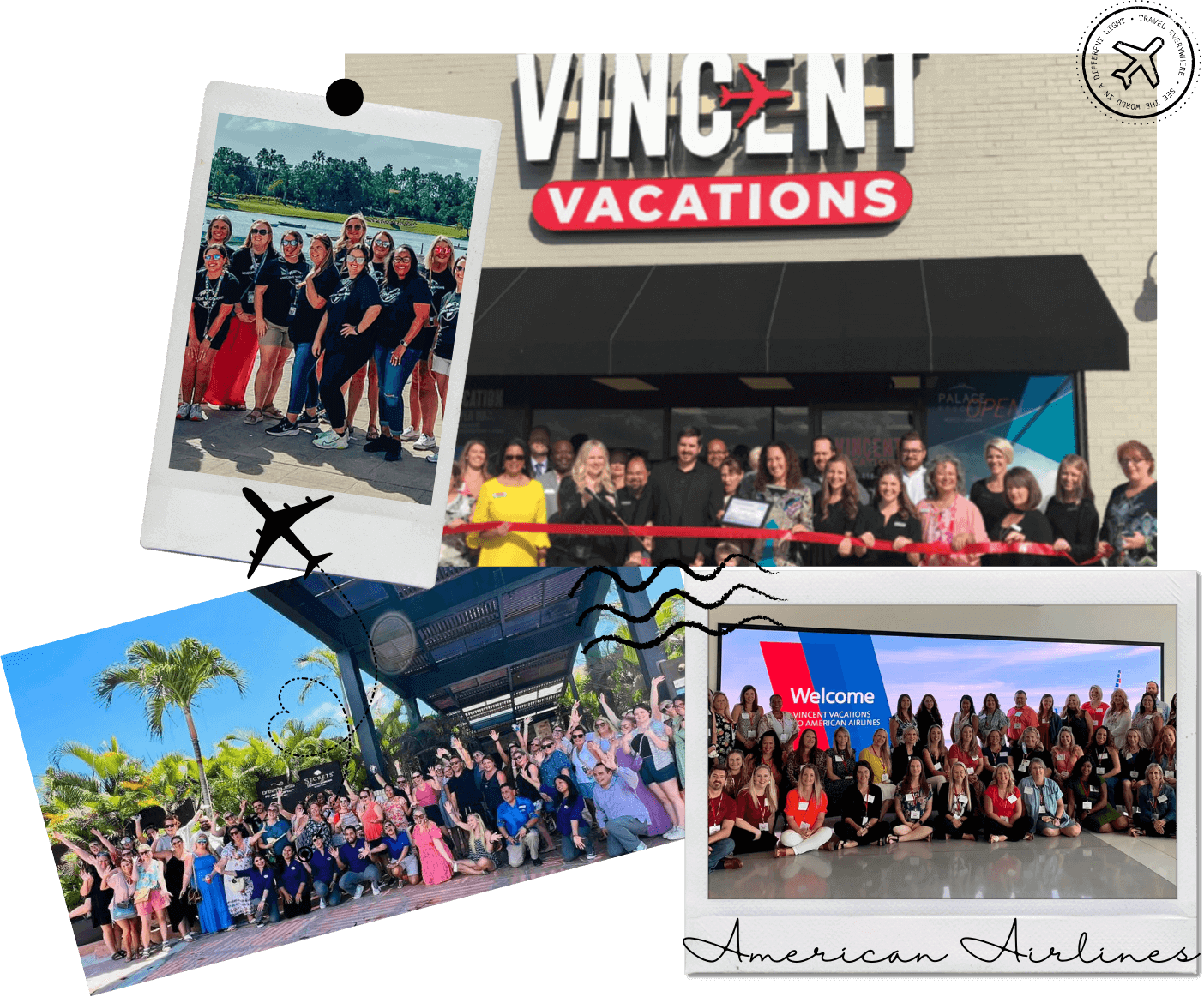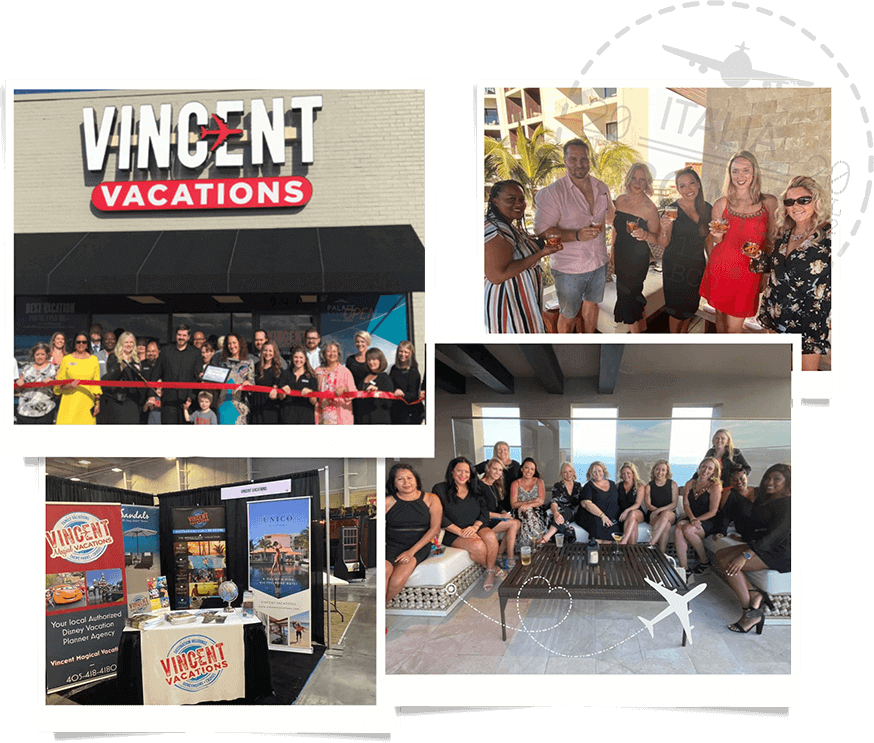We recognize that vacations are not just an investment, but often the highlights of our lives, and we take that responsibility seriously. We want to ensure you have the best vacation experience.
Interested in a job in travel? Click here to learn: How to Become a Travel Agent
Categories: Caribbean >
Us Virgin Islands > St. John
As one of the United States Virgin Islands, St. John is an unincorporated territory of the U.S. It is known as one of the most beautiful and upscale islands in the group of three U.S. Virgin Islands that includes St. John, St. Croix and St. Thomas. St. John is famous for its beautiful natural landscapes that have been preserved for the enjoyment of the public; in fact, 56% of the island is designated as the Virgin Islands National Park. For many people, this is exactly the reason they visit St. John — to experience its pristine natural resources which have been destroyed by development on many other islands. For other visitors, the goal is to lounge on a tropical beach, which St. John also has in abundance. One of its most famous beaches, Trunk Beach, is world-renowned and has been consistently ranked as one of the top beaches across the globe.
Free St. John
Vacation Package Quote A large part of the island's geography is dominated by the Virgin Islands National Park, which covers over half of the island and protects its natural resources, delicate ecosystems and hundreds of species of animals. The park was established in 1956 after American businessman Laurence Rockefeller donated most of the land (about 5,000 acres) he had acquired on St. John to the United States National Parks Service, under the stipulation that it be cared for and preserved. Today, the park remains one of the island's main attractions.
The Compass
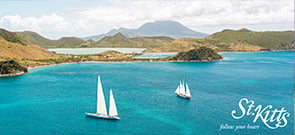
The St. Kitts Tourism Authority is confident that 2023 will bring ongoing growth in arrivals, as strategic programming, product development and positioning aligned with the new Venture Deeper brand campaign will continue to differentiate St. Kitts and drive continued success.
Featured Articles
See all articles
Free St. John
Vacation Package Quote
Categories: Caribbean >
Us Virgin Islands > St. John
Overview
Introduction

St. John, the smallest of the three major U.S. Virgin Islands, is laid-back with a casual, quirky ambience.
The 19-sq-mi/49-sq-km island is considered the most scenic and the most unspoiled of the three main islands. This is largely because two-thirds of St. John was set aside as the Virgin Islands National Park through a gift by Laurance Rockefeller. St. John is wholesome and outdoorsy—hiking shoes and snorkeling gear are musts. It's also dramatically beautiful, with coral reefs, volcanic mountains, deep ravines, tropical greenery, gorgeous cove beaches and an arid east coast dotted with salt ponds and cacti.
Don't overlook Cruz Bay, where many St. John residents live. Once a dusty port, it has blossomed into a charming resort town. Among the mix of elegant malls and tiny wooden houses are classy boutiques, cafes and bars. Its narrow, winding streets, parking problems and intermittent traffic jams prompt a word of caution to strollers and drivers alike. The ferry dock, a small park and the Virgin Islands National Park Visitors Center form the hub of Cruz Bay life.
The town of Coral Bay offers art galleries, boutiques, good snorkeling and bars with salty characters composing a fine blend of island experiences.
Most of St. John was hit hard by Hurricanes Irma and Maria, and because of its steep topography, recovery efforts were challenging. The island's stunning beaches and national park lands are back to what they once were, but some major resorts, restaurants and attractions may remain closed until further notice. Investigate current conditions prior to planning a visit.
Must See or Do
Sights—Exploring Annaberg Plantation; a tour of the Virgin Islands National Park; the views from Bordeaux Mountain.
Memorable Meals—Conch fritters at Miss Lucy's Restaurant; cioppino at Extra Virgin Bistro.
Late Night—Tequila shots at Greengos; hanging out with the locals at Woody's Seafood Saloon; drinks and casual food at the Tap Room.
Walks—A hike through Virgin Islands National Park; a stroll along Cinnamon Bay Beach.
Especially for Kids—Horseback or donkey cart rides through the trails with Carolina Corral; watersports along the beaches; the combo of kayaking, hiking and snorkeling with Virgin Islands Ecotours.
Geography
More than half of this island—only 7 mi/11 km long by 3 mi/5 km wide—is protected as a U.S. national park. It has many hills and valleys and very few flat areas. Its highest point is at Bordeaux Mountain, which rises 1,277 ft/396 m above sea level. The west side of the island is lush, and the east end is drier and sports cactus-covered hillsides, cliffs and salt ponds.
The coast is dotted with many protected bays. Some of the Caribbean's most breathtaking views are of the bays on St. John's north coast. The main town and port is Cruz Bay on the southwest corner.
History
Archaeological evidence exists of Native American inhabitants on St. John dating back more than 1,000 years. It was not until 1694 that Denmark claimed St. John. By the early 1700s, farmers began cultivating the hillsides, growing sugar and cotton. At its height, more than 100 plantations dotted the island. African slaves and indentured servants were brought in to toil on the plantations, and soon they greatly outnumbered the free men.
A fierce slave revolt in 1733 wiped out a quarter of the island's population and nearly paralyzed sugar production on St. John, but it was not until 1848 that slavery was abolished across what was then the Danish West Indies. The end of slavery eventually led to the demise of the sugar industry with the exception of plantations at Estate Carolina in Coral Bay and Reef Bay. By the time the U.S. bought St. John from Denmark in 1917 for US$25 million, the island's population had dwindled considerably.
News spread quickly in North America of the beautiful, lush tropical island, which gave rise to the island's newest industry—tourism. In 1956, Laurance Rockefeller's Jackson Hole Preserve donated 5,000 acres/2,000 hectares of the island to the U.S. government. The land eventually became the country's 29th national park, which makes up more than two thirds of the island.
Potpourri
St. John has no traffic lights. The government wanted to put one up in Cruz Bay, but the governor bowed to public sentiment and vetoed the plan.
Many visitors hope to get a glimpse of country-music singer Kenny Chesney—who has a home on St. John—but sightings are rare. That said, Chesney does hang out at local bars, so you might get lucky. (His home was destroyed during Hurricane Irma, although he is working to rebuild it.)
Local bees fly to a different drummer. They are Africanized, that is, of the so-called killer variety, yet they are not aggressive, just a bit defensive of their queens. They swarm often and produce superior honey and beeswax. The Department of Agriculture launched a beekeeping initiative in 2008, and the results are looking sweet.
Deer, wild pigs and donkeys roam freely in some parts of the island.
To locals, St. John is known as Love City.
The Animal Care Center is prepared to help anyone adopt a dog—even visitors. They will help with vaccination papers and shipping arrangements.
Location
Some smaller ships anchor off St. John for the day. Others tie up in St. Thomas and offer excursions to St. John.
Ship excursions cover pretty much everything there is to do on the island and are usually a good idea because time is limited. But if you prefer to walk around the town of Cruz Bay, it is so small that you can see everything in about an hour—if you are immune to the lures of shopping.
There's a tourist-information office next to the post office. Go left after leaving the ferry dock, turn the corner and enter through a large set of metal gates.
There are also information kiosks at Wharfside Landing and farther down from the post office. These are not government-run but are very helpful. Alternatively, ask a bartender or shop owner for advice if they're not too busy. They tend to be friendly and full of information.
The Virgin Islands National Park Visitors Center is at the Creek, a small bay where boats tie up. Look for the big building with the pistachio-green shutters.
There are plenty of restaurants, shops and places to access the internet within walking distance of the dock. If you want to venture outside of Cruz Bay, there are taxis waiting at the ferry dock.
Shore Excursions
Excursions—and their prices—vary from cruise line to cruise line. Typical tours include snorkeling, scuba and snuba diving; boat tours (both eco- and sunset cruises); a visit to a sugar plantation; or helicopter flightseeing tours. Check with your ship's shore-excursion staff or your travel agent for additional information.
Overview
Introduction
Lush and rural, St. John Parish, Barbados, is dotted with quaint villages and plantations, many of which are still working. Its beautiful parish church is usually open for viewing, and the panorama below is worth a trip. So is Bath Beach, and beyond it, Codrington College.
The oldest theological seminary in the hemisphere by some accounts, Codrington's Oxford-modeled buildings sit in breathtaking surroundings that are an inspiration in themselves. It's also an archaeological site of major importance, although that aspect has not yet been developed for public consumption.
Overview
Introduction
Antigua's largest city and the capital of the country, St. John's can be rather shabby in spots, but it's still a great place to visit. Plan a full day to see the sights, some of which date to the 1600s.
One must-see is the Public Market. You may not recognize some of the tropical fruits and vegetables for sale, but don't hesitate to buy and sample anything that appeals to you. (You may want to ask if it needs any preparation first.) The market is particularly lively on Friday and Saturday mornings.
The Cathedral of St. John the Divine on Church Street (look for the twin spires) is an Anglican baroque cathedral dating from the 1800s. Its pine interior includes lovely carved figures. The Museum of Antigua and Barbuda, located in the 18th-century Court House, has period portraits of King George III and Queen Caroline, as well as pre- and post-Columbian findings. It's also possible to sift through the museum records and to do a computer search for relatives who might have lived or died on Antigua. While you're there, check to see if the museum has any environmentally oriented hikes scheduled during your stay.
Other sights include the Botanical Gardens, located next to the Parliament Building, and the Antigua Distillery on Friars Hill Road where Cavalier Rum is made—if you call ahead, a tour can be arranged.
St. John's Harbour extends to the west of the city. Two forts guard the mouth of the harbor: On the north side are the remains of Fort James, which was constructed in the 1600s and 1700s, and on the south is Fort Barrington, built in the 1700s. McKinnon's Salt Pond, north of the capital, is a good place to watch seabirds during summer and fall.
St. Peter's Church, in the village of Parham (about 5 mi/8 km east of St. John's), is also worth a visit. The unusual octagonal structure is surrounded by red-blooming poinciana trees, making it one of the prettiest churches in the Caribbean. Parham, by the way, was Antigua's first British settlement and its original capital.
If you have time, be sure to see Betty's Hope Estate, a restored sugar plantation in Pares, about 7 mi/11 km east of St. John's on the way to Long Bay. The estate, which enjoys a peaceful, rustic setting, was Antigua's first and largest sugar plantation: Established in 1650 by the Codrington family, it was owned by this same family for almost 300 years. At any given time during its history, about 85% of the island's residents worked on Betty's Hope. One wind-powered sugar mill is now operating, and restoration of the slave quarters and cistern complex is under way. A second, nonoperating mill is also located on the estate. You'll also find displays and photographs about the plantation in the museum. It's free to visit and open Tuesday-Saturday. Phone 462-3946.
Waves from the Atlantic Ocean have, over the centuries, carved out Devil's Bridge, a natural rock arch. Some archaeologists believe Devil's Bridge was the site of the first Amerindian landings centuries ago. You'll find it at the extreme eastern tip of the island, an approximately US$30 taxi ride from St. John's.
Location
Cruise ship passengers disembark at the only dock at Heritage Quay. The dock is next to two duty-free malls, Heritage Quay and Redcliffe Quay. Many of the other attractions are within walking distance.
Taxis are available at the port and it is possible to rent a car in downtown St. John's.
Overview
Introduction

St. John's is the oldest city in Canada and one of the oldest cities in North America, but it can seem surprisingly young. Its roots date back almost five centuries, yet it boasts an eclectic blend of architectural styles and a modern, energetic atmosphere.
Built around its harbor—a natural fortress that drew both naval commanders and the fishing industry—St. John's has evolved from a fishing station to a thriving port city with an exciting blend of interests. A glance around St. John's Harbour will show you the city's strengths: trans-Atlantic cruise ships and small tour boats, docked fishing boats and long-liners, and loaded supply ships that work in the offshore oil industry.
From the harbor, you can see the glass and steel of office buildings, which are adjacent to the brick-walled buildings that house trendy shops, bustling cafes and restaurants. You can also see some of the most historic churches in Canada, as well as cultural attractions including The Rooms—a complex that towers over the city's skyline, bringing together the provincial museum, art gallery and archives.
Visitors will find great entertainment districts in the city's streets and such outdoor attractions as amazing wildlife and icebergs that drift by the rugged coastline. Just outside the city, you can explore the rest of the province, including the vast territory of Labrador.
St. John's continually reinvents itself. It has retained something of a small-town feel by capping limits on the height of new buildings, yet it is embracing new economic strengths, particularly in tourism and offshore oil development. As a trading port, it has always welcomed newcomers, while preserving its colorful and unique history.
Must See or Do
Sights—Cabot Tower on Signal Hill towering over St. John's harbor, and the Fort Amherst Lighthouse; views of the oldest surviving lighthouse in Newfoundland, a World War II coastal defense battery, and the first sunrise over the continent at Cape Spear National Historic Site; the trails and monuments at Bowring Park; views from the east and west observation decks at The Rooms provincial museum.
Museums—The Rooms, designed as an old fishing house, houses the museum, art gallery, and the provincial archives; the Railway Coastal Museum, with more than 100 years of rail and coastal history; Government House, where members of the British royal family stay when visiting and the site of one of North America's few moats.
Memorable Meals—Aqua Restaurant and Bar, for its imaginative and elegant seafood dishes; fish-and-chips at Leo's Restaurant and Take-Out; an elegant Mediterranean experience at Bianca's.
Late Night—Folk music at the Ship Pub; a pub crawl along George Street; a Screech-In, a Newfoundland tradition that turns you into an honorary local; a rib-bursting comedy-dinner theater night with Spirit of Newfoundland Productions.
Walks—The Grand Concourse, an intricate network of trails stretching in all directions around the city; a loop around Quidi Vidi Lake; route from the Battery to Signal Hill along the East Coast Trail.
Especially for Kids—The underground rock formations in the Johnson Geo Centre; a boat tour to see seabirds and whales (in season); underwater viewing tanks at the Fluvarium on Long Pond in C.A. Pippy Park.
Geography
St. John's has grown from a small harborside village to a thriving metropolis that covers much of the northeast Avalon Peninsula. It is bordered by a series of smaller towns and villages, some of which have retained their historic feel and charm.
The downtown includes St. John's Harbour, which boasts natural features that especially appeal for military and commercial purposes. There is only one access point to the harbor—a thin waterway between two rocky hills (known as The Narrows). Rows of houses, many of them brightly painted, line the streets that creep up the steep hill leading away from St. John's Harbour. The city's suburbs and other neighborhoods are to the north.
The city's two key roads are Water Street and Duckworth Street, both of which date back centuries. Once dubbed the "Lower Path," Water Street is the oldest street in North America and remains a commercial hub of Newfoundland.
History
St. John's once promoted itself as the site of adventurer John Cabot's 1497 landfall. Cabot—born Giovanni Caboto in Italy—sailed on behalf of England to find a new route to the Far East but instead found North America.
There is no evidence supporting the landfall claim, but the city appears on Portuguese maps by 1519. By 1583, there was already an established community to greet Sir Humphrey Gilbert when he arrived and declared Newfoundland the first colony in the British Empire. By the early 1600s the city's location (the easternmost city in Canada) earned it the most important access to the New World, and it prospered as a prime fishing port.
In 1892, a fire that began in a stable almost completely destroyed the city, displacing more than 12,000 people. Believing that stone would prevent the fire from progressing, well-to-do residents moved their valuables into the stone Anglican Cathedral of St. John the Baptist. A fierce wind and droughtlike conditions created a tinderbox, and the church, the entire commercial district and many homes were devoured by an inferno lasting more than 12 hours. Many heritage buildings date from that era and are known as "Southcott Style," for the architect who oversaw much of the reconstruction.
The role of St. John's in representative government began in the 19th century. The Colonial Building, seat of the first government, still stands at Bannerman Park. Government House, home of the British governors who were in command until St. John's joined Canada in 1949, is also located in the city.
St. John's is still the administrative center of Newfoundland, but it also remains a major fishing community. The city's economy is as dependent on what is below the water in oil exploration and fishing as it is on what sails across it for local and transcontinental tourists.
Potpourri
The nickname of St. John's is "City of Legends," alluding to an accumulated five centuries of lore and legend.
People who live in Newfoundland are sometimes referred to as "Newfies." Though you'll see this word in the more touristy sections of town, be careful using it yourself. Much like the term "redneck" in the U.S., "Newfie" carries a stigma that is based on an unattractive stereotype.
You may come across a "Screech-In" during your visit. Though it's touted as being a tradition, the game was concocted in the 1970s for tourists. Participants are encouraged to down a drink of Screech (a brand of rum), recite some silly lyrics and then kiss either a cod or a puffin (usually stuffed).
The milestone that forever changed the way the world communicates occurred when Guglielmo Marconi received the first trans-Atlantic wireless signal at St. John's Signal Hill back in 1901.
Well before Charles Lindbergh's historic crossing, British aviators John Alcock and Arthur Whitten Brown made the first nonstop air crossing of the Atlantic Ocean from St. John's, Newfoundland, to Clifden, Ireland, in 1919.
Location
Whether it's ecotourism, Canadian and New England cruising or a trans-Atlantic voyage, St. John's is the port of call for a wide variety of cruise lines. Given the abundance of activities, accommodations and dining options available there, it's no wonder that some refer to the city as small-town Canada with a European flair.
Ships dock in the heart of the city on the Marginal Wharf between Piers 6 and 11. As passengers disembark, they can expect an honorable welcome by cannon blast as local musicians serenade them. They step directly into the old downtown core, surrounded by shops, cafes, restaurants and attractions. A Newfoundland or Labrador dog welcomes passengers and will pose for pictures.
A short walk from the dock at 348 Water St. (phone 709-576-8106), St. John's Tourism offers local information. City ambassadors are stationed dockside as well as throughout the downtown area to help visitors. Within a short stroll from their docking points, passengers will find local crafts, food and ice cream, plus boat tours to local sights.
Taxis are always lined up dockside when ships come in; many large cruise ships make port calls at St. John's.
St. John's is home port to many smaller expedition vessels as well. Itineraries include stops along the coasts of Newfoundland and Labrador, parts of northern Canada, Greenland and Iceland, and the northern U.S.
Shore Excursions
St. John's offers a plethora of interesting historic sites, impressive scenery, parklands and walking trails, as well as eclectic shopping. You'll also find ecological reserves, archaeological sites, seasonal festivals and special events, great shopping, and more than a few options for sailing on the Atlantic Ocean for whale- and bird-watching.
Local destination management companies offer preplanned as well as customized tours to accommodate individual or group needs. Tour options include half-day city tours, walking and hiking tours, a scenic trip to Cape Spear, boat tours, kayaking and canoeing as well as full-day tours to museums, galleries, botanical gardens and science centers.
When looking for activity options, don't forget about the surrounding areas of Southern Shore, Conception Bay, St. Mary's Bay and Trinity Bay.
Overview
Introduction
Set in northeastern Vermont 70 mi/110 km east of Burlington and in the area known as the Northeast Kingdom, St. Johnsbury was an important railroad center in the 1800s. Today, it provides outstanding examples of Italianate residential architecture.
While you're in town, visit the Fairbanks Museum and Planetarium (interactive science exhibits in a nicely restored Victorian building), the Athenaeum Art Gallery (one of the oldest in the U.S., featuring 18th- and 19th-century American and European art) and the Maple Grove Maple Museum (which looks at the many uses for the tree that's a quintessential part of New England). Also worth a look is the Catamount Film and Arts Center, which hosts film screenings, art exhibits and performances showcasing the work of local and regional artists.
About 20 mi/32 km southwest of St. Johnsbury is Peacham, one of the most quintessentially "New England" villages in the state.
North of St. Johnsbury is the incredibly picturesque Lake Willoughby, a vast body of water created by retreating glaciers with depths beyond 300 ft/91 m. Nestled within Willoughby State Forest and flanked by the peaks of Mount Hor and Mount Pisgah is an outdoor enthusiast's paradise, with endless fishing, wildlife-watching, boating and hiking opportunities. It is also an ideal place to watch the lake and the surrounding environs ablaze with fall colors.
For entertainment of a different sort, head to the Bread and Puppet Museum and Theatre in nearby Glover. For more than three decades, this politically minded troupe has created often immense and haunting puppets for use in lively satirical performances. Housed in a century-old barn, the museum is the site of the puppet collection, as well as shows June-October. During the remainder of the year, the troupe travels the world with their plays.
























